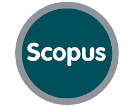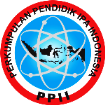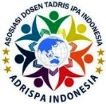Exploring the Development of Digital Teaching Materials Integrated Quranic with the Canva App
Abstract
This study aims to develop digital science teaching materials integrated with Quranic verses, particularly those relatedto the Earth and solar system, to enhance students’ scientific literacy and foster character values aligned with thePancasila Student Profile. The research employed the Borg and Gall research and development (R&D) model, whichconsists of ten systematic stages ranging from data collection to final product implementation. The research samplecomprised 40 students, three expert lecturers, and six science teachers, selected through a non-probability samplingapproach using the convenience sampling technique. The developed digital teaching materials demonstrated a high levelof validity and were positively received by students. Their use effectively improved students’ scientific literacy, as indicatedby an N-gain score of 0.44 (medium category) and an effectiveness value of 1.120 (high category). Furthermore, theassessment of the Pancasila Student Profile revealed that 58% of students had developed cultured character traits.These findings suggest that integrating Quranic verses into digital science teaching materials not only enhances students’understanding of scientific concepts but also strengthens their internalization of religious values, thereby supportingholistic character development consistent with the Pancasila Student Profile framework.
Keywords: digital teaching materials, integration of Quranic verses, science literacy, Pancasila student profile
Full Text:
PDFReferences
Aiken, L. R. (1980). Content Validity And Reliability of Single Items or Questionnaires. Educational and Psychological Measurement, 40(4), 955–959. https://doi.org/10.1177/001316448004000419
Amir, I., Nursalam, N., & Mustafa, I. (2022). Tantangan Implementasi Nilai-Nilai Profil Pelajar Pancasila dalam Pembelajaran Bahasa Indonesia pada Kurikulum Merdeka Belajar. GHANCARAN: Jurnal Pendidikan Bahasa Dan Sastra Indonesia, 204–215. https://doi.org/10.19105/ghancaran.vi.7587
Anggraena, Y., Felicia, N., Ginanto, D. E., Pratiwi, I., Utama, B., Alhapip, L., & Widiaswati, D. (2021). Kajian Akademik: Kurikulum untuk Pemulihan Pembelajaran (1st ed.). Jakarta: Kementerian Pendidikan, Kebudayaan, Riset dan Teknologi.
Ayuningtyas, T., Jayatri, F., & Rohmayanti, R. (2019). Pengembangan Buku Ajar IPS Terpadu Berbasis 3 Dimensi di SMPN 3 Pasiran - Lumajang dengan Pendekatan Contextual Learning. Proceedings of The ICECRS, 2(1), 225–231. https://doi.org/10.21070/picecrs.v2i1.2415
Baltes, S., & Ralph, P. (2022). Sampling in Software Engineering Research: A Critical Review and Guidelines. Empirical Software Engineering, 27(4), 1–31. https://doi.org/10.1007/S10664-021-10072-8/METRICS
Budiawan, A., Riskina, Z., & Vebrianto, R. (2022). Analisis Model Integrasi Sains dan Islam pada Pembelajaran IPA di SMP Negeri 05 Rokan IV Koto. Milenial: Journal for Teachers and Learning, 3(1), 27–32.
Chasanah, G., Suryaningsih, S., & Fairusi, D. (2019). Analisis Integrasi Keislaman Pada Materi Kimia Pangan (Sumber, Manfaat, dan Keterpahamannya). JTK (Jurnal Tadris Kimiya), 4(2), 168–176. https://doi.org/10.15575/jtk.v4i2.5197
Coello, J. G., Albornoz, J. M., & Cabrera, E. P. (2023). Educación 4.0. Universidad Católica de Cuenca.
Cohen, J. (1988). Statistical Power Analysis for the Behavioral Sciences (2nd ed.). United States of America: Lawrence Erlbaum Associates.
Creswell, J. W. (2013). Qualitative Inquiry & Research Design: Choosing Among Five Approaches (3rd ed.). California: Sage Publication.
Drake, S. M., & Reid, J. L. (2018). Integrated Curriculum as an Effective way to teach 21st Century Capabilities. Asia Pacific Journal of Educational Research, 1(1), 31–50.
Etikan, I., Musa, S. A., & Alkassim, R. S. (2016). Comparison of Convenience Sampling and Purposive Sampling. American Journal of Theoretical and Applied Statistics, 5(1), 1–4. https://doi.org/10.11648/j.ajtas.20160501.11
Fahruli, M. T. A., Biruni, I. B., Choirunnisa’, N., Karomika, D., Sofyan, M. A., & Rahmana, A. Y. (2023). Ricosre For The Empowerment of Students’ Scientific Literacy In A Islamic Boarding School. Bioedukasi: Jurnal Biologi Dan Pembelajarannya, 21(1), 52–56. https://doi.org/10.19184/bioedu.v21i1.32399
Fardila, N. F., Toharudin, U., & Hendrayana, S. (2023). Pengaruh Penggunaan Model Problem Based Leaning Terhadap Hasil Belajar dan Profil Pelajar Pancasila Siswa di SDN 151 Sukasenang Kota Bandung. Didaktik: Jurnal Ilmiah PGSD FKIP Universitas Mandiri, 09(03), 122–136.
Fortus, D., Lin, J., Neumann, K., & Sadler, T. D. (2022). The role of affect in science literacy for all. International Journal of Science Education, 44(4), 535–555. https://doi.org/10.1080/09500693.2022.2036384
Fuadi, H., Robbia, A. Z., Jamaluddin, J., & Jufri, A. W. (2020). Analisis Faktor Penyebab Rendahnya Kemampuan Literasi Sains Peserta Didik. Jurnal Ilmiah Profesi Pendidikan, 5(2), 108–116. https://doi.org/10.29303/jipp.v5i2.122
Guerrero-Quiñonez, A. J., Bedoya-Flores, M. C., Mosquera-Quiñonez, E. F., Ango-Ramos, E. D., & Mesías-Simisterra, Á. E. (2023). Higher Education 4.0: Brief Considerations. Ibero-American Journal of Education & Society Research, 3(1), 272–275. https://doi.org/10.56183/iberoeds.v3i1.628
Habibi, M., Zainuddin, & Misbah. (2017). Pengembangan Perangkat Pembelajaran IPA Fisika Berorientasi Kemampuan Pemecahan Masalah Menggunakan Model Pengajaran Langsung Pada Pokok Bahasan Tekanan. Berkala Ilmiah Pendidikan Fisika, 5(1), 1–17.
Hadi, A., Ngindana, R., Sulaiman Kurdi, M., & Sulaiman Kurdi, M. (2023). New Paradigm of Merdeka Belajar Curriculum in Schools. Jurnal Pendidikan, 15(2).
Hake, R. R. (1998). Interactive-engagement versus traditional methods: A six-thousand-student survey of mechanics test data for introductory physics courses. American Journal of Physics, 66(1), 64–74. https://doi.org/10.1119/1.18809
Irbah, A. N., Ichsan, I., & Fauziah, N. (2022). Competency Evaluation and Performance Training against Merdeka Belajar Curriculum among Kindergarten Teachers. JOYCED: Journal of Early Childhood Education, 2(1). https://doi.org/10.14421/joyced.2022.21-07
Jansen, S., Knippels, M. C. P. J., & van Joolingen, W. R. (2019). Assessing students’ understanding of models of biological processes: a revised framework. International Journal of Science Education, 41(8). https://doi.org/10.1080/09500693.2019.1582821
Khoiriyati, W. R., & Daulai, A. F. (2023). National Curriculum and Integrated Islamic School Network Curriculum: Integration Practice in Islamic Education. Jurnal At-Tarbiyat :Jurnal Pendidikan Islam, 6(1), 190–205. https://doi.org/10.37758/JAT.V6I1.662
Khomsatun, N., Solehuddin, M., & Mulyadi, M. (2023). Implementasi Profil Pelajar Pancasila dalam Pembelajaran PAI Kelas X di MAN 2 Gresik. RISDA: Jurnal Pemikiran Dan Pendidikan Islam Volume, 7(1), 14–42. Retrieved from https://ejournal.staiarrosyid.ac.id/index.php/risda/index
Latipah, N., Khosiin, Candrawati, E., Ulum, B., & Niam, F. (2020). Analisis Integrasi Nilai Pendidikan Islam Pada Kurikulum Tadris IPA IAIN Bengkulu. At-Ta’lim : Media Informasi Pendidikan Islam, 19(1), 132–144. https://doi.org/10.29300/ATTALIM.V19I1.3843
Liu, C. C., Wen, C. T., Chang, H. Y., Chang, M. H., Lai, P. H., Fan Chiang, S. H., … Hwang, F. K. (2022). Augmenting the effect of virtual labs with “teacher demonstration” and “student critique” instructional designs to scaffold the development of scientific literacy. Instructional Science, 50(2). https://doi.org/10.1007/s11251-021-09571-4
Marisa, M. (2021). Curriculum Innovation “Independent Learning” in The Era of Society 5.0. Santhet: Jurnal Sejarah, Pendidikan Dan Humaniora, 5(1), 66–78.
Miriam, S., Salam M, A., Dewantara, D., Hidayati, M., & Azhary, Y. (2022). Electronic teaching materials containing quranic verses: its development and scientific writing. Jurnal Pemberdayaan: Publikasi Hasil Pengabdian Kepada Masyarakat, 6(1), 22–2976.
Nurhayati, D. (2023). Analisis Pendidikan Islam dan Sains Pada Profil Pelajar Pancasila dalam Kurikulum Merdeka di Madrasah. Prosiding Konferensi Integrasi Interkoneksi Islam Dan Sains, 5, 115–120.
OECD. (2023). PISA 2022 Results Factsheets Indonesia. Paris. Retrieved from https://oecdch.art/a40de1dbaf/C108.
Panebianco, C. J., Dutta, P., Frost, J. R., Huang, A., Kim, O. S., Iatridis, J. C., … Weiser, J. R. (2023). Teaching Tissue Repair Through an Inquiry-Based Learning Bioadhesives Module. Biomedical Engineering Education, 3(1). https://doi.org/10.1007/s43683-022-00087-y
Pearce, J., Stones, A., Reiss, M. J., & Mujtaba, T. (2021). ‘Science is purely about the truth so I don’t think you could compare it to non-truth versus the truth.’ Students’ perceptions of religion and science, and the relationship(s) between them: religious education and the need for epistemic literacy. British Journal of Religious Education, 43(2), 174–189. https://doi.org/10.1080/01416200.2019.1635434
Putri, F., & Aprison, W. (2023). Integrasi Agama-Sains dalam Perspektif Al-Qur’an. Jurnal El-Rusyd, 8(1), 1–11.
Rahmah, A., Rena, S., & Al-Ghifary, M. U. (2021). Analisis Korelasi untuk Menentukan Hubungan Literasi Sains dan Motivasi Berpretasi Terhadap Hasil Belajar Pendidikan Agama Islam. Al-Munawwarah: Jurnal Pendidikan Islam, 13(2), 1–22.
Rusilowati, A., Astuti, B., & Rahman, N. A. (2019). How to Improve Student’s Scientific Literacy. Journal of Physics: Conference Series, 1170(1). https://doi.org/10.1088/1742-6596/1170/1/012028
Singh, K. D., Singh, P., Kaur, G., Khullar, V., Chhabra, R., & Tripathi, V. (2023). Education 4.0: Exploring the Potential of Disruptive Technologies in Transforming Learning. Proceedings of International Conference on Computational Intelligence and Sustainable Engineering Solution, CISES 2023, 586–591. Institute of Electrical and Electronics Engineers Inc. https://doi.org/10.1109/CISES58720.2023.10183547
Sufyadi, S., Lambas, L., Rosdiana, T., Rochim, F. A. N., Novrika, S., Iswoyo, S., … Mahardika, R. L. (2021). Pembelajaran Paradigma Baru. Jakarta: Kementerian Pendidikan, Kebudayaan, Riset, dan Teknologi.
Sugiyono. (2019). Metode Penelitian Pendidikan (3rd ed.). Bandung: Alfabeta.
Suhandri, S., & Syahwela, M. (2024). Pengembangan Bahan Ajar Matematika Terintegrasi Keislaman untuk Menumbuhkan Karakter Siswa SMP. Jurnal Cendekia : Jurnal Pendidikan Matematika, 8(2), 926–937. https://doi.org/10.31004/cendekia.v8i2.2228
Susilaningsih, E., Aprilia, N., Hayati, S., Kimia, J., Matematika, F., Ilmu, D., & Alam, P. (2022). The Effectiveness of Teaching Materials Loaded with Blended Learning with a Scientific Approach on Buffer Solution Learning. In JIPK (Vol. 16). Retrieved from http://journal.unnes.ac.id/nju/index.php/JIPK
Tikhonova, E., & Raitskaya, L. (2023). Education 4.0: The Concept, Skills, and Research. Journal of Language and Education, 9(1), 5–11. https://doi.org/10.17323/JLE.2023.17001
Udvaros, J., Gubán, M., Gubán, Á., & Sándor, Á. (2023). Industry 4.0 From The Perspective of Education 4.0. International Journal of Advanced Natural Sciences and Engineering Researches, 7(4), 230–234. https://doi.org/10.59287/ijanser.705
Wiraputra, I. P. F. A., Suastra, I. W., & Sudiana, I. N. (2023). Dampak Positif Model Pembelajaran SAVI Berbantuan Mind Mapping Terhadap Literasi Sains dan Hasil Belajar IPA. Jurnal Imiah Pendidikan Dan Pembelajaran, 7(1), 124–133. https://doi.org/10.23887/jipp.v7i1.60087
DOI: http://dx.doi.org/10.24014/jnsi.v8i2.31785
Refbacks
- There are currently no refbacks.

Journal of Natural Science and Integration
E-ISSN: 2620-5092 P-ISSN: 2620-4967
Published By:
Department of Science Education, Faculty of Education and Teacher Training,
State Islamic University of Sultan Syarif Kasim Riau, Indonesia
Mailing Address:
Jl. H.R Soebrantas Km. 15 No. 155
Kelurahan Simpang Baru
Kecamatan Tuah Madani, Pekanbaru, Riau, Indonesia
Email: jnsi.tadrisipa@uin-suska.ac.id
Indexed By:
Journal of Natural Science and Integration is licensed under a Creative Commons Attribution 4.0 International License.


_-_Copyy2.png)






.jpg)
.png)
.jpg)
.jpg)




